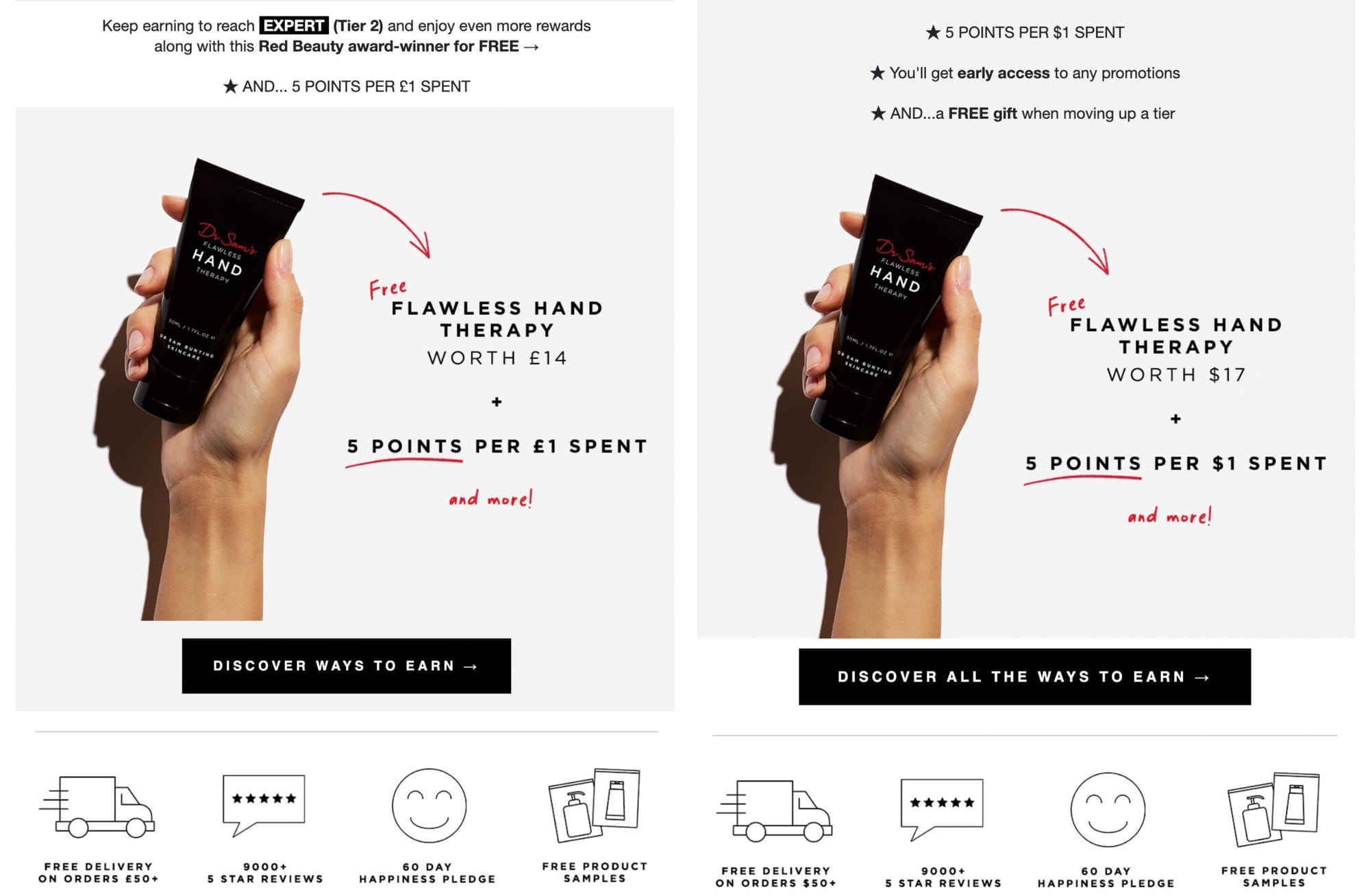Loyalty programs are a key retention strategy for commerce brands to generate repeat customers. The sole purpose of a loyalty program is to turn one-time customers into repeat customers and build a loyal following.
Globally, loyalty programs have evolved into an integral part of an ecommerce store’s strategy. This is especially important as there are fewer barriers and limitations to how customers shop across channels and across the world. Customers can easily checkout from various channels, payment methods are more secure and direct, and shipping is faster than ever.
Managing international loyalty programs has become increasingly simple, thanks to ecommerce platforms, scalable apps, and data analytics that enable personalized customer experiences and streamlined operations across multiple markets.
As a result, global loyalty programs serve as powerful tools for fostering long-term customer relationships and driving sustainable business growth in a world that is more connected than ever.
Table of Contents:
- Is it time to expand your loyalty program?
- Essential steps for scaling your loyalty program internationally
Is it time to expand your loyalty program?
Loyalty programs are strategically designed to reward and retain customers by offering incentives based on their repeat purchases. A well-built loyalty program offers value to customers, whether that is a discount, free products, or a unique experience.
So, when would it be time to expand your loyalty program to other markets worldwide? It’s time to scale your loyalty program internationally when:
- You have a competitive advantage that appeals to international customers.
- The domestic market you operate in is oversaturated.
- You’re looking to expand beyond your current customer base.
- There is customer demand in one key area or market.
You already have or are looking to grow a global brand presence.
Essential steps for scaling your loyalty program internationally
The idea is to expand once you have a strong foundation in your loyalty program. You should know what works for your current customer base and industry. Before you scale your loyalty program, you need to prove there is a demand in new markets.

1. Understand the local and regional context
The key first step in scaling your loyalty program across borders is to understand the local and regional context in the place you are trying to expand. Research your target countries and areas to understand market dynamics, customer behavior, and purchasing patterns. What makes a customer turn from a site visitor into a repeat customer? What key ways do customers find similar products, and what do they think about your products?
Identify local competitors already operating in the market you’re trying to scale to. Discover what they do differently from you and how you can stand out. This could include competitors that may not even have an online presence yet. Most importantly, recognize cultural differences that might affect customer engagement with loyalty programs. Do they shop differently? Do they have a deep understanding of rewards and loyalty programs? What incentives will motivate them? Or will part of your launch plan include educating customers on what a loyalty program is and how it will benefit them?

2. Determine your goals
The next step in scaling your loyalty program across borders is determining what you aim to achieve by expanding to a new market. Your goals may include increasing customer retention in a new market you introduced a while back or boosting sales and overall brand loyalty. In this stage, you can discuss the KPIs you want to hit, such as boosting repeat purchase rates, increasing AOV, or reducing your cart abandonment rate.

One example of scaling across borders is the travel and lifestyle brand Monos. As travel resumed post-pandemic, and more customers were spending with Monos, it was time to offer a retention incentive. That is when Monos introduced Wayfarer Rewards, a comprehensive loyalty program that offers customers points for every purchase, referral rewards, and two VIP tiers.

Launched across Canada, the US, and the UK, Monos understood what its customers were looking for with its loyalty program and how customers responded to the rewards Monos offered. Having already educated and excited customers about Wayferer Rewards, Monos intentionally offered the same rewards and discounts (just in different currencies) upon international expansion. This meant no matter where customers shopped (in-store or online and in their country), their points could be used and redeemed for the same valuable rewards.

3. Adapt your value proposition, rewards, and offers
When you expand in a new market or demographic, communicating your value proposition is important for customers to understand why they should do business with you. Scaling a loyalty program across borders is no different. Localizing the value proposition of your loyalty program and its rewards and marketing communication to cater to local preferences and culture is crucial for establishing a strong connection with the target audience.
When Dr. Sam’s Skincare migrated to Smile.io, it adapted its rewards and loyalty program to its US and UK audience. By pairing its new referral, points, and VIP programs with a well-branded email campaign specifically tailored to its audience in each country and powered by Klaviyo, it achieved a 98.71% rewards redemption rate.

This approach builds trust and credibility, positioning your ecommerce business as a part of the local fabric rather than an outsider. Ultimately, localization goes beyond mere translation; it involves adapting the entire marketing strategy to fit the specific context of customers in your new market.

4. Foster local, strategic partnerships
Entering a new market means new opportunities to form genuine connections with local businesses and the community. When scaling your loyalty program across borders, utilize strategic partnerships by collaborating with local businesses, offer experimental rewards, and truly build a community around your rewards.
R+Co. Rewards is a perfect example of a loyalty program that goes the extra mile for customers who fall into the highest tier of its VIP program. Members who fall into their tier are invited to exclusive events and have access to a test panel for new product development. Testing out rewards and experimenting with what appeals to customers can be the start of optimizing your loyalty program to be valuable for your customers.

5. Integrate a capable loyalty platform
Now that you have gone through the essential steps in scaling your loyalty program across borders, you need to consider the most important step—find the right loyalty program platform. Your loyalty program provider needs to handle customer data and unique markets and work across your existing ecommerce tools and apps.
Smile.io ensures that your loyalty program runs effectively and can scale and grow with you. Our stance is that an ecommerce business should search for tools focused on one function. This gives ecommerce businesses the ease that whoever is in charge of your tool, is an expert. Finding a tool that focuses on loyalty will help you craft a strategy and have access to deep integrations with the rest of your tech tools. You’ll also get detailed reports to see if your strategy is working at all. It’s simple—you don’t want a team of generalists in charge of your ROI.
Implementing the right loyalty program will drive results. Based on data looking at loyalty in ecommerce industries, 41% of an ecommerce store’s revenue is created by only 8% of its customers, and your top 5% of customers generate 35%. This 5% is made up of your most loyal repeat customers, making it clear that repeat customers generate revenue and are extremely profitable.

Scaling a loyalty program across borders and the world requires careful consideration of local market dynamics and determining what you want to achieve when entering a new market. Once you have adapted your value proposition to your new demographic, ensured compliance regulations, built meaningful partnerships, and chosen the right loyalty platform, you can build upon your foundation to build a brand community and customer loyalty worldwide.









